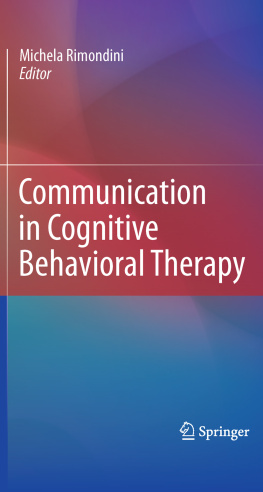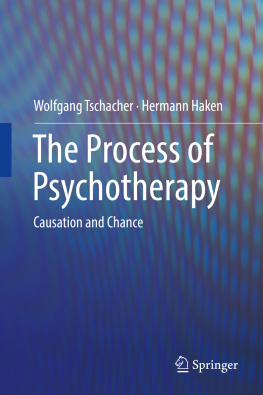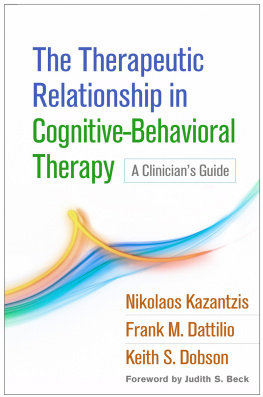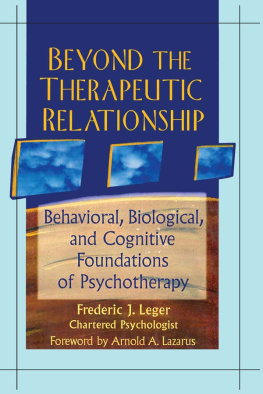Michela Rimondini (ed.) Communication in Cognitive Behavioral Therapy 10.1007/978-1-4419-6807-4_1 Springer Science+Business Media, LLC 2011
1. Background Theories and Main Systems of Analysis of Communication in Cognitive-Behavioral Therapy
Abstract
The etymology of the term communication comes from the Latin expression communicatio which identifies the action of sharing things. The concept of reciprocity seems therefore to be fondant in the original meaning of this word and definitely is in the connotation assumed in the present book. Indeed, in psychotherapy the healing process is mainly based on the combinations of words that allow the sharing of values, beliefs, feelings, and perceptions between two or more people. Through his narratives, the patient offers the description and significance of the presenting problems according to his perspective; the therapist has to return it enriched with a reformulation that contains elements of support and utility for the patient.
1.1 Introduction
The etymology of the term communication comes from the Latin expression communicatio which identifies the action of sharing things. The concept of reciprocity seems therefore to be fondant in the original meaning of this word and definitely is in the connotation assumed in the present book. Indeed, in psychotherapy the healing process is mainly based on the combinations of words that allow the sharing of values, beliefs, feelings, and perceptions between two or more people. Through his narratives, the patient offers the description and significance of the presenting problems according to his perspective; the therapist has to return it enriched with a reformulation that contains elements of support and utility for the patient.
Communication has been largely studied over the centuries; a plentitude of theories and models have been produced. This topic is approached by many different disciplines, including anthropology, sociology, economy, psychology, philosophy, engineering, and many others. According to the different perspectives that can be assumed, a wide range of possible definitions is available, each identifying a specific aspect of the process.
As the object of this book is communication in cognitive-behavioral therapy, I will focus just on a specific area of communication theory (intended as the whole of the existing models on communication): interpersonal communication. After a brief introduction to the main concepts and theories on interpersonal communication, I will move to describe the dyadic interaction that happens in the healing context between the healthcare provider and the client. Particularly, I will focus on the clinicians application of communication skills during the consultation, describing some of the existing evidence on the effectiveness of a patient-centered approach in terms of clinical outcomes. The last section will propose an overview of some of the existing instruments purposely developed for the analysis of clinicianpatient communication.
1.2 Interpersonal Communication: Models, Definitions, and Key Notes
Hartley () defines as interpersonal communication those interactions where two individuals , face to face relate to each other, and the form and content of this interaction reflect personal characteristics , social role and type of relationship . In this definition all uses of a medium of communication that stand between the sender and the receiver (papers, video, telephone) are excluded. Mentioning the role of the two speakers implies a heterogeneous range of possible relationships, which widen from the family context (e.g., motherson), to the education setting (teacherlearner), and of course to the therapeutic context as well (doctor/psychotherapistpatient).
The role played by the speakers is one of the situational factors that, together with personal characteristics, provide a contextual backdrop of communication. Acting conjointly, they determine how people conduct themselves during social interactions (Hargie et al. ), in any situation individuals act in accordance with more or less clearly recognized sets of expectations placed upon their role and social status. In addition to this element, the author indicates other free sources of influence: goal structure, rules, repertoire of elements, sequences of behavior, situational concepts, language and speech, and physical environment.
In the definition of interpersonal communication, a historically controversial topic is whether or not it is inevitable. Theories (Watzlawick et al. ) include this element together with shared attention, shared belief, and theory of the mind among the four core components of the ability to communicate. In psychotherapy, for example, intentionality is represented by the distinction between a patients passive manifestation of the symptoms and his or her selection and production of words or nonverbal behaviors calculated to inform the therapist. The distinction between informative and communicative behavior is tricky, and in reality it is quite difficult to draw a line that divides one from the other. It is essential to remember that in clinical psychology and psychotherapy, both have strong implications in the assessment and intervention sessions.
Few models stress the hypothesis of a goal-driven interpersonal communication (Tracy and Coupland ).
Interpersonal communication represents an ongoing process , an unfolding flow of single events chained to each other (Craig .
1.3 From Interpersonal Communication to Communication Skills
During the 1990s, a variety of approaches investigating what actually happens during interpersonal communication flourished and an increasing interest toward the identification of communication skills and specific communication patters of analysis led to the development of quantitative and qualitative methods for human interaction examination. New issues emerged in various contexts, such as workplace, cultures, mass media, education, and health care as well.
In the clinical setting, the study of formal aspects of communication, meant as the way a message is sent, includes both patients and healthcare providers units of speech. For example, patients expressions can be analyzed in terms of syntactic correctness/richness and use of bizarre, evocative, or repetitive sentences. Provider utterances can be processed in order to check which skills (i.e., open questions, summarizing, emphatic comments) are used, or what communication patterns seem to be more effective during interactions with patients.
What drove the efforts of researchers, clinicians, and educators to deepen and expand the study of communication skills is their positive impact on important clinical variables such as prognosis, adherence to treatment, or personal satisfaction. The next section will present some of the main research performed in this field; these data are partially reprised in other chapters of the book (i.e., Chapters 25), when stressing the importance of founding ones own professionalism (whenever it is possible) on an evidence-based model.
1.3.1 Communication Skills and Clinical Outcomes: Why Effective Communication Enhances the Quality of Care
As an Italian writer, to explain the importance of communication skills for good clinical practice, I will use a metaphor where a good clinician with poor communication skills is compared to an excellent bottle of Barolo without a corkscrew. The bottle may be produced by selecting the best grapes from the best vineyards, aged in barrels made of fine wood, and preserved according to the ideal temperature and humidity conditions, but if it cannot be opened, no one will have the opportunity to appreciate its smell or taste. Similarly, a clinician with an excellent theoretical background from the best schools of medicine, psychology, or psychotherapy, passionate about her job, and with years of experience in the field will waste all her talent if is she is not able to disclose these competencies and make them available for the patient. Reversibly, having a corkscrew in the hand enables us to open the bottle of wine, but does not guarantee that we will make the best use of it, like using it for cooking or for getting drunk. Likewise, the appropriateness in micro-skill application comes from the theoretical background, clinical experiences, personal attitudes, and self-awareness of the clinician, which means that the professionalism relies on the co-presence of all these elements blended together.












